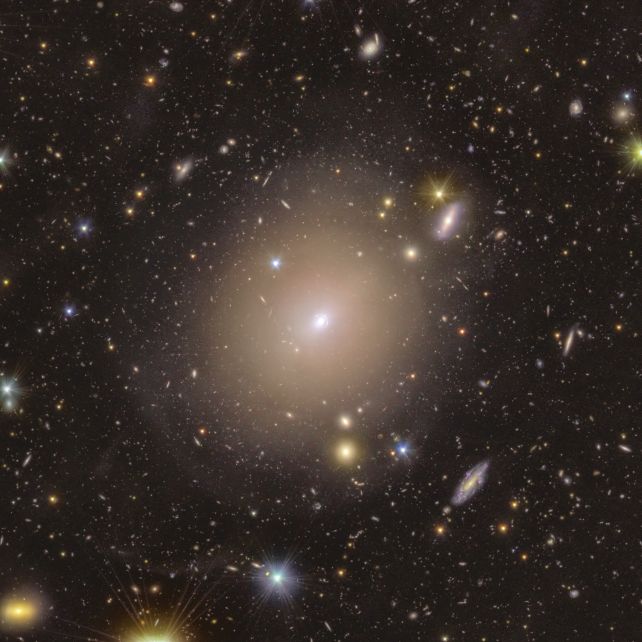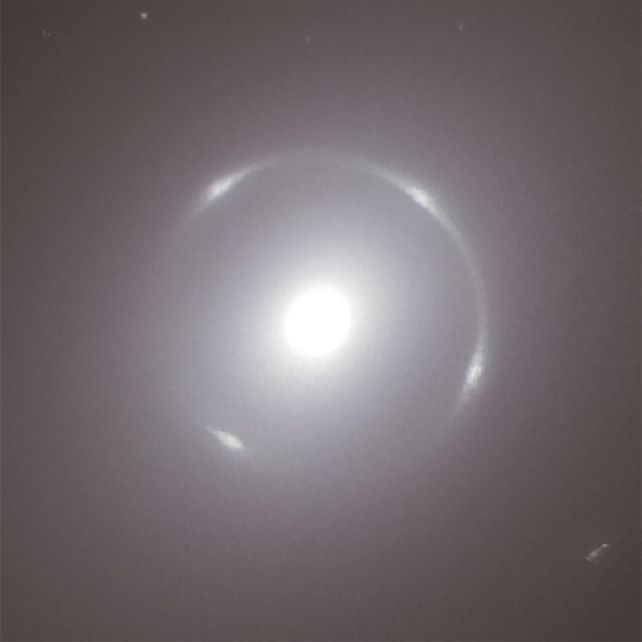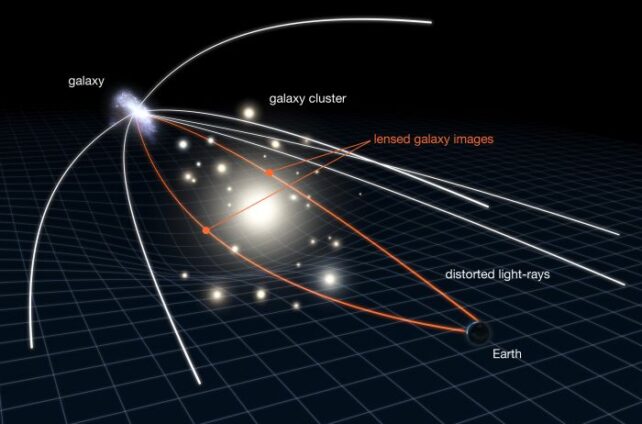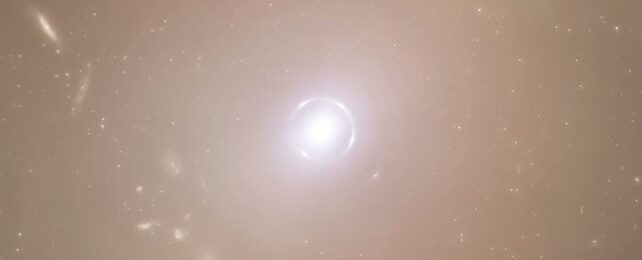Around a galaxy just 590 million light-years away, astronomers have discovered a stunning example of one of the rarest phenomena in our skies: a perfect ring of light.
The phenomenon is known as an Einstein ring, and it was discovered circumscribing the galaxy NGC 6505 in data collected by the European Space Agency's Euclid space telescope. And, while such rings have been found before, such a spectacularly perfect example is rarer still.
"An Einstein ring is an example of strong gravitational lensing," says astronomer Conor O'Riordan of the Max Planck Institute for Astrophysics in Germany.
"All strong lenses are special, because they're so rare, and they're incredibly useful scientifically. This one is particularly special, because it's so close to Earth and the alignment makes it very beautiful."

A gravitational lens is what happens when space-time warps around mass. Picture a trampoline mat with a bowling ball on it. The way the mat stretches is similar to the way space-time stretches and curves around a large mass plopped in its midst.
Galaxies and galaxy clusters are usually the masses in question, but the effect scales for anything with mass, including you.
However, when the mass is particularly large, it creates an interesting effect: any light traveling from a distance beyond the lensing object warps, smears, and magnifies as it travels through the curved space-time. This can be extremely useful for studying the distant Universe – and it can also be extraordinarily pretty.
In the case of the newly discovered Einstein ring, the light that encircles the near galaxy is from a more distant galaxy, sitting some 4.42 billion light-years away, whose light has been warped by the curvature of space-time around NGC 6505.
It's a very lucky arrangement of objects: they are aligned in such a way that the distant galaxy's light is stretched into a perfect ring, with brighter blobs representing replicated images of the galaxy at four points around the ring.

And the closeness of NGC 6505 makes it even more astonishing. Only five other lenses have been discovered so close; simulations suggest this new lens only had a 0.05 percent chance of existing, never mind being discovered.
The more distant galaxy had never been seen before; now, scientists have the perfect tool to study it in greater detail than would be possible without the lens.
"I find it very intriguing that this ring was observed within a well-known galaxy, which was first discovered in 1884," says astronomer Valeria Pettorino of the ESA.
"The galaxy has been known to astronomers for a very long time. And yet this ring was never observed before. This demonstrates how powerful Euclid is, finding new things even in places we thought we knew well. This discovery is very encouraging for the future of the Euclid mission and demonstrates its fantastic capabilities."

The distant galaxy, which is yet to be named, is also yet to be studied in detail. That will undoubtedly be the focus of future work. The discovery itself, however, is one to marvel at – the first Einstein ring ever discovered circling one of the 7,840 objects in the New General Catalogue.
It also shows that Euclid is functioning exactly as it should. The telescope is designed to look for gravitational lenses to try and map and understand the invisible dark matter and dark energy that make up most of the matter-energy density of the Universe. Its discovery of one so quickly, around a galaxy we've been studying for 140 years, is promising.
The researchers suggest that the object be named Altieri's Lens for astronomer Bruno Altieri of the European Space Agency, who discovered the object in Euclid data from the telescope's testing phase in 2023.
"Even from that first observation, I could see it, but after Euclid made more observations of the area, we could see a perfect Einstein ring," Altieri says. "For me, with a lifelong interest in gravitational lensing, that was amazing."
The research has been published in Astronomy & Astrophysics.
